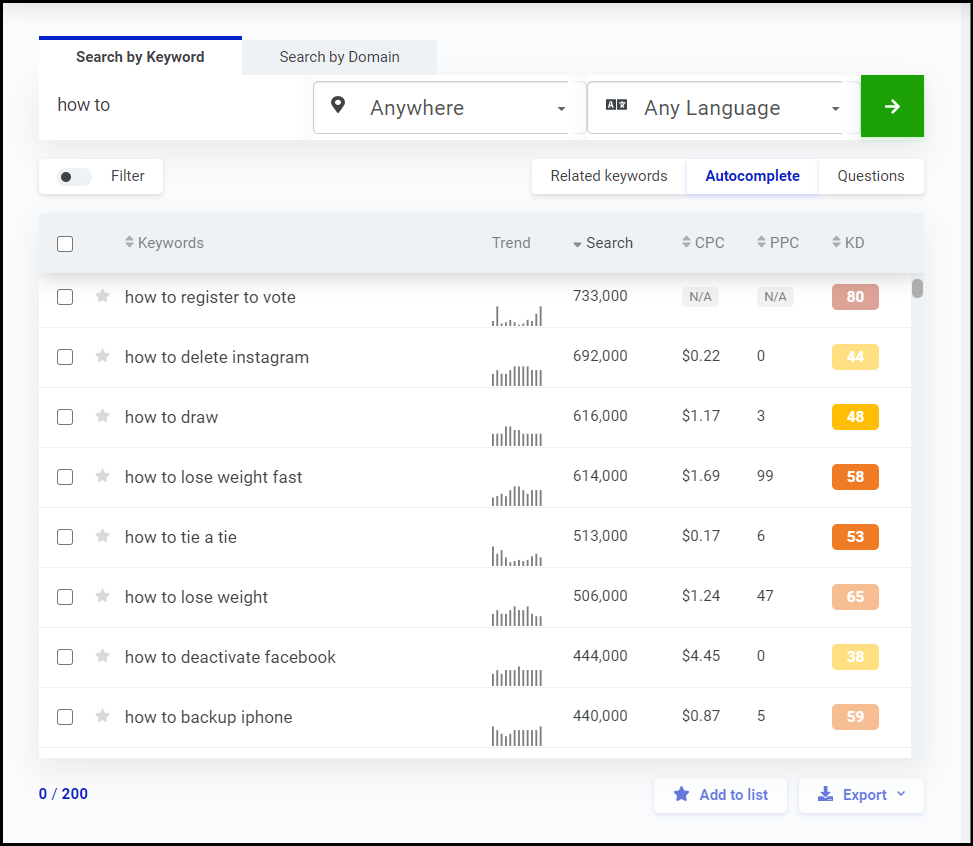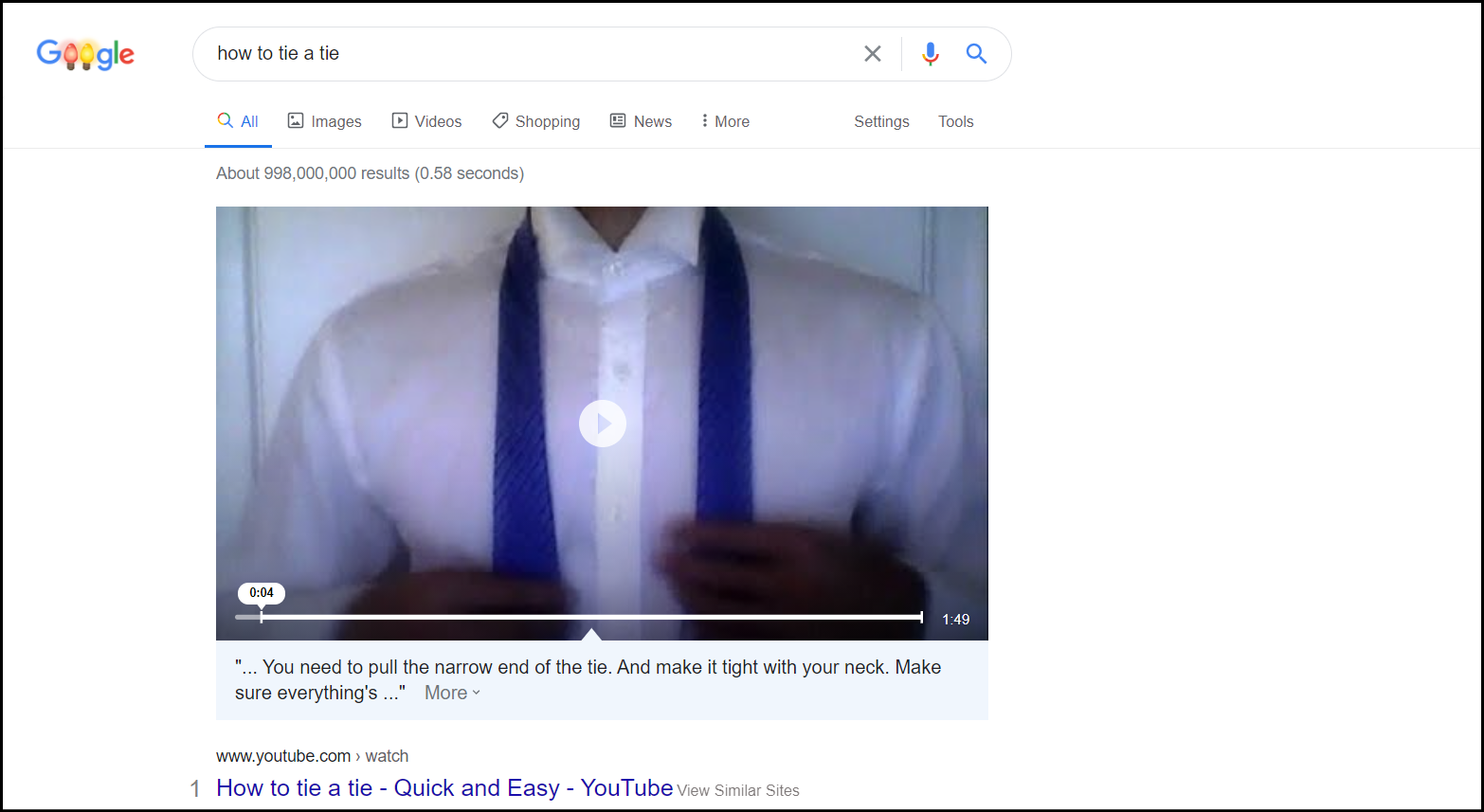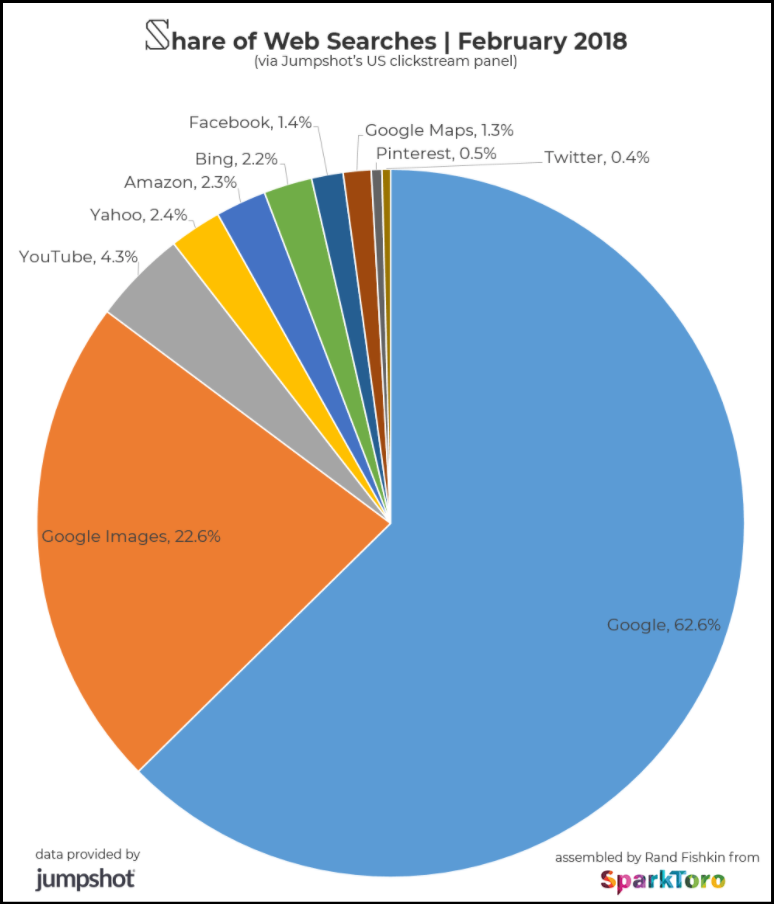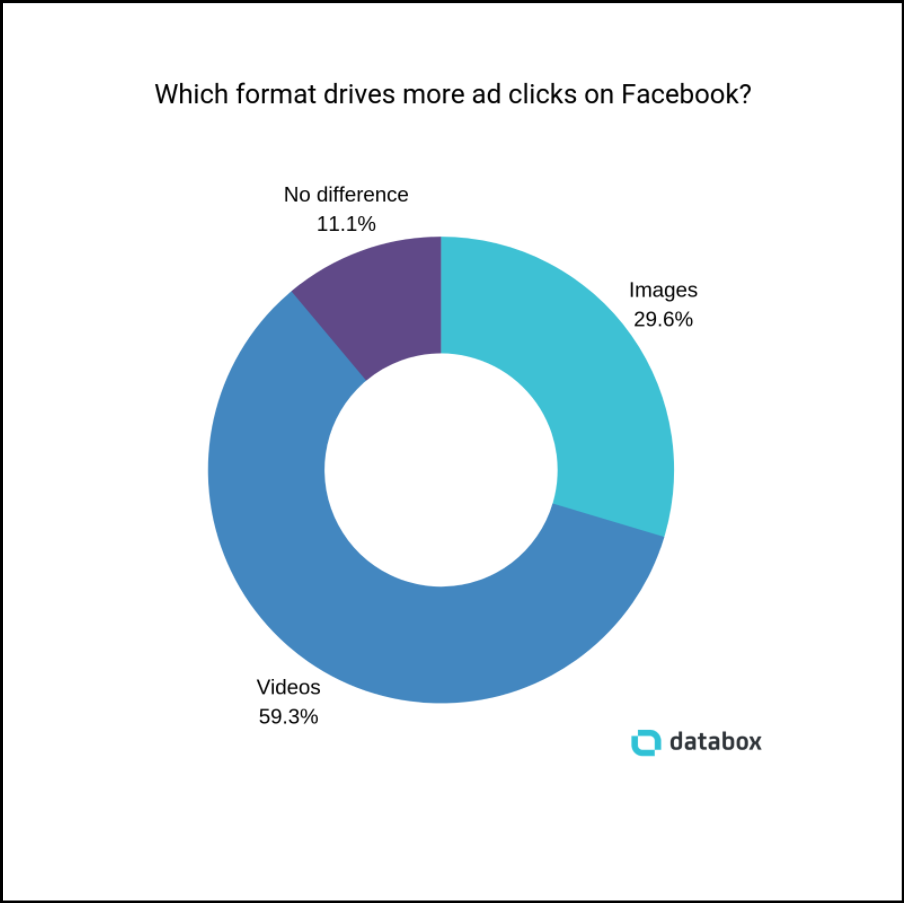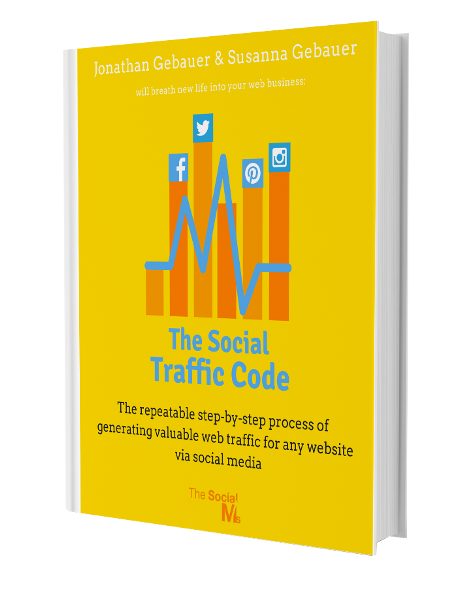The following is a guest post by Oli Graham. Oli Graham is the Marketing Manager for digital content agency RightlyWritten.
Blogging and content marketing, much like every other aspect of a business, is governed by the rules of supply and demand.
The greater the number of blog posts that exist on a particular topic, the harder it will be to drive traffic and revenue with your content.
With 70 million new blog posts being published each month, the blogging landscape is getting more competitive. Bloggers have to push their content creation efforts further just to get eyeballs on their work.
Before you read on - we have various resources that show you exactly how to use social networks to gain massive traffic and leads. For instance, check out the following:
FREE Step-by-Step Twitter Marketing GuideFREE Pinterest Marketing Ebook
Adding original video content to your posts is one of the easiest ways to give your posts the extra touches of quality needed to beat out your competition when it comes to driving traffic to your website.
Let’s look at why video content can be such a powerful tool in a blogger’s arsenal.
Why video content can improve your blog’s traffic
At the broadest level, the addition of original videos to your blog posts can increase your potential to drive traffic in two ways. These are:
- For certain posts, Videos can improve the overall quality and SEO friendliness of your blog content.
- Video allows you to tap more effectively into a diverse range of traffic sources.
I’ll break these points down one by one, starting with how video can improve your blog posts’ quality.
Video can make “how-to” posts far more actionable.
Almost every blogger has at some point written a “how-to” post. These are articles that aim to teach a reader how to do something.
There are two reasons why these types of posts are so popular among bloggers. Firstly, one of the main reasons people use search engines is learning how to do something practical that they have never done before.
Queries beginning with “how-to” therefore often have a lot of search volume (so long as they are on a topic people care about).
Secondly, if you can successfully teach someone how to do something new, you can quickly establish yourself as a trustworthy source of information to a reader.
Hey, before you read on - we have in various FREE in-depth guides on similar topics that you can download. For this post, check out:
FREE workbook: CREATE AWESOME BLOG POSTSFREE Beginner's Guide: START A BLOG
Building trust with readers should be the purpose, in part at least, of any blog.
Therefore, when creating a “how-to” post, your purpose should always be to teach your reader as effectively as possible. This is where having video components to your post can help.
A video tutorial showing you doing the action that you are trying to teach in real-time can make your “how-to” post better than all the other articles on that topic.
While you can go into great detail with just text and images, videos have the added benefits of letting users listen to instruction in the background. At the same time, they perform a task, referencing the video’s visual component as and when they need to.
Google appreciates that videos are a popular medium to answer “how-to” queries, as shown by the fact that the search engine often displays video searches first when people make searches beginning with “how-to.”
As video content allows you to provide the best possible post for these searches, adding instructional videos to “how-to” articles should both lead to more search traffic (as Google’s function is to match the best possible article to each query) and will make your blog posts more effective in building trust with your audience and establishing your website as an authority in its industry.
Videos can make posts more search engine friendly.
Speaking of search traffic, including relevant videos in your blog posts can make them better optimized for search engines.
This is due for two reasons.
Firstly, search engines prefer articles that are rich in detail. This is particularly true when it comes to ranking informational pieces of content like blog posts.
When crawling the information on your page, Google can see that you have videos embedded in your post and read the video’s title.
If all else is equal, an article containing a relevant video explains a topic in greater detail than one that does not.
Therefore, if there is not much else to choose from between pieces of content, Google will favor articles that it can see has a video embedded into them over ones that do not.
The second way how having videos embedded in your post can help with SEO is that it can improve “user engagement signals.”
User engagement signals refer to the ways that your audience interacts with your page. Since 2015, Google has measured what users do when they land on your page in an attempt to work out how well each webpage satisfies a particular search.
For example, if Google can see that many users are clicking on a certain page and then clicking straight off in a matter of seconds, this suggests that the page in question is not a good result.
The search engine will then give the page lower visibility in the future, as it always wants to provide its users with the best results possible.
One metric that Google looks at when measuring user engagement is “dwell time.” Dwell time refers to the amount of time that someone spends on a page once they have clicked on it.
Image source: https://online-metrics.com/
Higher dwell time (that is, more time spent on a page) suggests to search engines that users like a page’s content. Why would people spend a long time on a page if they weren’t enjoying what it contained?
Therefore, the search engine rewards pages with a high dwell time with increased visibility in the future.
Having video elements in your blog posts can increase your dwell time as it gives users more content to interact with.
Thirty seconds is a large margin when it comes to dwell-time. Having a small percentage of your visitors watch a one-minute video on your blog can greatly increase your page’s average dwell time compared to the posts you are competing against on the search engine results page.
Videos can help your blog become memorable and draw in repeat visitors (and customers)
One of the biggest drawbacks of blogging to grow a business is that there can be a big disconnect between someone reading your blog and becoming a customer.
More often than not, people will search for something, find the answer in your blog post, and then click off, never to think of your post or the people behind it ever again.
With video content, this can be different. People are more likely to remember video content than text, so you may well see more repeat traffic from blogs with video elements.
Furthermore, video allows you to feature the people in your company and introduce them to potential customers. The cliche “people buy from people” is frequently used because it was true, and videos that feature you and your team can tap into this psychology.
How having video in your blog can allow you to tap into more sources of traffic.
With text-and-image only blog posts, you are relying heavily on driving traffic from search.
While you may get some traffic from social media and from your email list, video content allows you to drive far more traffic from social platforms, as well as opening up video platforms as traffic sources.
Here are the ways that video content opens up these additional traffic sources.
Video content allows you to drive traffic from YouTube straight to your blog.
YouTube is the second most used search engine after Google with 2 billion users each month.
Image source: sparktoro.com
You can only access this traffic if you create original video content and upload it to the platform.
You can drive YouTube traffic to your blog by adding a call to action in your video to click on the link in the description to your accompanying blog post.
If the video is useful enough to convince viewers to click and consume more content from you, this can drive a lot of traffic, especially if your video ranks well for relevant keywords within YouTube.
Fortunately, ranking in YouTube is (for now anyway) easier than in Google. There are far fewer Youtubers than bloggers, so the supply of content is lower on the video platform.
YouTube is becoming more competitive, and this trend will almost certainly continue in years to come, so it’s well worth getting started now to have a head start over other bloggers.
Videos can make your blog more visible when posted on social media.
Although you can use social media to drive traffic to blog posts that do not contain video, having accompanying videos to your posts can earn your posts a lot more social traffic.
The reason for this is that you can use short snippets of your video to create video-based posts and adverts (if you used paid social to promote your content) that link to your articles.
Video posts tend to perform better than text-and-image based searches, both in terms of reach and click-through rate.
Image Source: Databox
This equates to more organic traffic driven from social media and a cheaper cost per click for any paid advertising you may use as part of your blog promotion.
If you produce longer videos, you can test various video snippets against each other and see how well they perform in terms of driving clicks. This can allow you to drive even more social traffic to your blog posts over time.
Videos can help newsworthy blog posts get press coverage.
Advanced bloggers who conduct original research pieces can have the option of promoting their content by pitching the data in their posts to be used and cited by relevant journalists.
This “digital PR” method of blog promotion is becoming more popular given the mainstream media’s current state. Big publications make money by selling advertising space that they charge by impressions.
Consequentially, these companies are incentivized to publish a larger quantity of articles each day. It is not uncommon for a staff writer to write 6-8 articles a day, every day.
Bloggers can take advantage of this helping journalists during the ideation stage of their article creation through pitching information that they have uncovered when researching their own blog posts.
If this information is used in an article, the blog post will often be cited with a link. This drives traffic back to the blog and helps with the article’s SEO.
So why does video content help with this?
Well, an increasing amount of big publications now require a video on every article. This is true of Forbes, The Sun, and Entrepreneur Magazine.
It can take a lot of time for a busy journalist to source this necessary video content. If your article contains a video ready to use, then this can be a useful “nudge” for a journalist to include a reference to your blog post in their article.
Getting your blog featured in the press is all about saving a journalist’s time and making their job as easy as possible. Including video content in your post does exactly that.
Final thoughts on the power of video content for bloggers
Although video can be a powerful tool for bloggers, some thought is required to incorporate videos in your blogs.
Not every post requires a video, and you should always think about your video’s purposes before you create it. This is particularly important when it comes to budgeting.
If you are creating a video just to drive extra traffic from social media, a quick animated video made with inexpensive software could be enough to drive extra traffic.
For some posts, particularly how-to posts, an explainer video might be the center-piece of your article. Fortunately, screen-recording software can make “over the shoulder” explainers of computer-based tasks quick and easy to create.
Although creating video content might be daunting at first, once you have gotten to grips with the basics of recording, presenting, and editing, it is generally a lot faster to create video content than written posts.
The speed that you can pump out content, once you have gotten to grips with the art of creating it, is another reason why videos can drive huge amounts of traffic.
Forget Failure. Get the simple process to success:
We show you the exact steps we took to grow our first business from 0 to 500k page views per month with social media and how we got 50k visitors per month from social media to this blog after 6 months. We show you the exact steps you need to take to see traffic success.
You get easy-to-follow step-by-step action plans and you will see the first results after a couple of days. Check out “The Social Traffic Code” – there is a special offer for you!
“The Social Ms blog and books have shown us great possibilities of growing on Twitter and via online media. In addition, they actually respond to email reactions. Practicing what they preach gives them the credibility edge.” Guy Pardon, Atomikos
Don’t miss out – make a decision for success!


